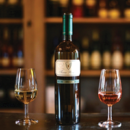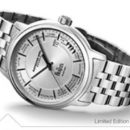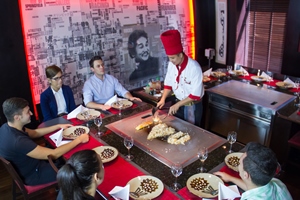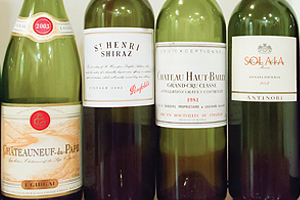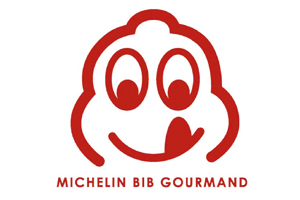
The story of Michelin Guides: how do restaurants earn their stars?
For well seasoned travelers having lunch or dinner in a Michelin star restaurant is a must. But what lays behind the most sought restaurants in the world, who decides what restaurants to be rewarded and which are the criteria?
The French entrepreneurs Ándre and Édouard Michelin started a tire company 1889 and named it Michelin. In 1900, they decided to publish a rating guide for hotels and restaurants. The Michelin guide was intended to boost the demand for cars, and thus for car tires.
The first edition was printed in 35,000 copies at a time when there were around 2,200 cars in France. As the tire company grew, so did their guide. They launched country-specific editions throughout Europe that became popular enough to compel the brothers to start charging for the booklets in 1920.
In 1926, the guide expanded to the industry that made it famous – fine dining. Five years later, the three-star system was introduced. Initially, there was only a single star awarded. Then, in 1931, the hierarchy of one, two, and three stars was introduced and later, in 1936, the criteria for the starred rankings were published and it remained unchanged until now:
* (one star) signifies
“A very good restaurant in its category” (“Une très bonne table dans sa catégorie”)
** (two stars) signify
“Excellent cooking, worth a detour” (“Table excellente, mérite un détour”)
*** (three stars) signify
“Exceptional cuisine, worth a special journey” (“Une des meilleures tables, vaut le voyage”)
The Michelin Guide also awards Rising Stars, an indication that a restaurant has the potential to qualify for a star, or an additional star. Since 1955, the guide has also mentioned restaurants offering “exceptional good food at moderate prices,” in a feature called “Bib Gourmand”. They must offer menu items priced below a maximum determined by localeconomic standards. Bib is the company’s nickname for the Michelin Man, its corporate logo for over a century.
All listed restaurants, regardless of their star – or Bib Gourmand – status, receive a “fork and spoon” designation, as a subjective reflection of the overall comfort and quality of the restaurant. Rankings range from one to five: One fork and spoon represents a “comfortable restaurant” and five signifies a “luxurious restaurant”.
Although initially covering only France the Michelin Guide expanded in Europe in the first half of the last century: the first Michelin Guide to Italy was published in 1956, in 1974, the first guide to Britain, in 2005 Michelin produced its first American guide, concentrating on New York and in 2007 Tokyo Michelin Guide was launched.
In 2015 the guide covers 25 countries and it is sold in nearly 90 countries. In 2014, the top of Michelin Guide restaurants was dominated by France and Japan with 594 and respectively 516 starred restaurants.
When a restaurant is awarded a Michelin Star, it is a sign that the chef succeeded at the highest level. Losing a star might be daunting; Gordon Ramsay, the British celebrity chef said he cried when his New York restaurant The London lost its prestigious two Michelin Stars in 2014.
How are restaurants evaluated
Michelin reviewers, inspectors, are completely anonymous; they do not identify themselves, and their meals and expenses are paid for by the company, never by the restaurant reviewed. Michelin has gone to extraordinary lengths to maintain the anonymity of its inspectors.
Many of the company’s top executives have never met an inspector; inspectors themselves are advised not to disclose their line of work, even to their parents and, in all the years that it has been putting out the guide, Michelin has refused to allow its inspectors to speak to journalists.
All inspectors have an extensive background in the culinary arts, many are former chefs and all of them must pass official Michelin Guide six month training in France.
Unlike many food critics, they do not take notes while eating, and will often visit a restaurant multiple times before reaching a conclusion. If there is any doubt about a restaurant, another inspector will go to eat there for a second opinion. The inspectors, the editor of the Michelin guide and the director of Michelin all meet several times a year. They discuss the restaurants, compare reports, and decide whether to award or withdraw stars.
What are the criteria for awarding stars?
According to Michelin, stars reflect “what’s on the plate and only what’s on the plate”. The five criteria they are judged on are:
* The quality of ingredients
* The skill in their preparation and the combination of flavors
* The level of creativity
* The value for money
* The consistency of culinary standards
Other criteria, such as décor and service, are indicated by fork-andspoon symbols, and do not affect star ratings.
While one of the criteria for stars is the quality of the ingredients, this doesn’t mean the ingredients have to be luxurious – but they do have to be very fresh. Starred restaurants do tend to be expensive, but Bib Gourmand restaurants serve great food at reasonable prices.
Over 100 years ago the Michelin brothers devised the guide with the intention of boosting the demand for cars, and thus for car tires. Today the goal remains the same, although is projected in a more sophisticated way: it represents a brand-building tool developed on the tradition rooted in the company’s founders.
Top 10 cities in the world with Michelin restaurants in 2015:
1. Paris, France
2. Tokyo, Japan
3. New York, US
4. Hong Kong, China
5. Kyoto, Japan
6. London, UK
7. Florence, Italy
8. Macau, China
9. Copenhagen, Denmark
10. Berlin, Germany


